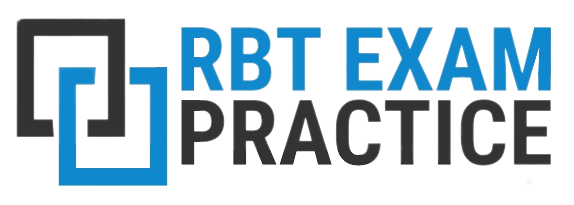Registered Behavior Technicians (RBTs) are instrumental in applying Applied Behavior Analysis (ABA) interventions, and therefore systematic assessment is a fundamental aspect of their practice. ABA is a science-based intervention employed to monitor progress over time for a client, guaranteeing that interventions are both efficient and backed by evidence. ABA is informed by psychology and sociology and addresses advances in the field of functional behavior science.
A good grasp of ABA involves knowledge of its 7 dimensions—Applied, Behavioral, Analytic, Technological, Conceptually Systematic, Effective, and Generality. These principles inform behavior technicians on how to deliver interventions that yield lasting and meaningful behavioral modifications.
To candidates sitting for the RBT exam, it is important to grasp these dimensions since they constitute the core of ABA practice. Candidates should also understand how to evaluate client performance, objectively measure improvement, and implement data-driven decision-making in practice. Having a proper understanding of such concepts not only aids in passing the exam but also improves the quality of care to clients.
Contents
The 7 Dimensions Of Applied Behavioral Analysis
Let’s quickly dive in.
1. Applied
The beauty of applied sciences lies in the fact that these principles go beyond theoretical concepts and try to integrate the entirety of the person’s personality as well as individual circumstances. It makes use of real-life skills like communication, cultural differences as well as adaptive technology.
Psychometric testing principles are employed to make sure the analysis is as up-to-date and technically relevant as possible. This also means that real-life situations are used to generate scientific data about the behavior of a client. Personal and social adaptation (such as coping mechanisms and outbursts around parents, friends, occupational settings, etc) are used to generate important information.
2. Behavioral
What sets ‘behavior’ apart from other psychological components is the fact that it is observable and measurable with the precision that ‘emotions’ and ‘cognitions’ cannot achieve.
This is precisely the reason why behavior continues to be chosen as the main focus of development by BCBA professionals and counselors.
Therefore, the assessment tools and settings used within an ABA must not focus on implicit thought and emotive content but rather on explicit and pragmatic behavior.
Disconnect decisions that individuals have acted upon, the emotion they are actually expressing in the form of crying, laughing, etc as well as the everyday routines and habits that they continue to maintain over time.
3. Analytic
Behavioral Analysis is a science, which is why the subjective selection and interpretation of data is avoided as much as possible. Behavioral technicians are expected to make use of existing assessment tools as much as possible and to choose from available scientific literature.
The Journal Of Applied Behavioral Analysis (JABA) regularly publishes detailed research that helps technicians understand the pros and cons of a certain technique.
The proper analysis of information is even more important. Evidence-based results should be given priority over faith and intuition because this will help the client, in the long run, to understand that limitation in a not specific way.
4. Technological
The 7 dimensions of ABA stress the importance of concise and coherent procedures. All measurement techniques make use of the latest technology, filling the physical and geographical gap with virtual assessment tools. Behavior technicians are encouraged to use such interventions so that the client can benefit the most from these assessments.
Similarly, when data is analysed and interpreted, the technician is expected to have an in-depth knowledge of technical software which is why of regular use in this field.
5. Conceptually Systematic
BCBA’s approach to Applied Behavioral Analysis follows a specific pattern that makes it efficient as well as measurable in the truest sense of the word. The standard procedures are employed to make sure the data is observed in an impartial setting, collected using proper measurement tools, and presented in a uniform manner.
Most importantly, since ABA makes use of multiple techniques, supervisors understand how to conceptually integrate and represent the data so that maximum observations can be drawn from it. At the same time, he or she must remember not to deviate from the general practices of psychology.
6. Effective
The goal of ABA interventions is to help the client develop unique and healthy behavior alternators that make day-to-day life not only more efficient but also more fulfilling. Therefore, behavior technicians must never forget what an effective session is and must create ABA plans that facilitate such growth.
At the end of the day, ABA sessions must be goal-oriented and measured against the personal goals that the client has already set.
7. Generality
The 7 dimensions of ABA acknowledge that every person lives a unique style of life with different goals, skills, and learning abilities. But at the end of the day, data should have a generalisability value.
Generalizability refers to the ability to impose the results of one particular study or assessment on all similar situations with confidence that the results will be applicable to all of them. Similarly, the behavior must remain the same across time. When the analyst is conducting an assessment of what the client has learned during the sessions, we must make sure that the setting is chosen in such a way that the results are generalizable to other areas of their life.
Conclusion
Every client is different and they all have a different learning rate. Regular assessment of this development – or lack thereof – is really important both for the client’s knowledge and the BCBA’s creation and implementation of plans. The 7 dimensions of ABA guide the supervisors and behavior technicians in understanding the hidden components of personal, social, and professional development for clients of different ages and backgrounds. The integrity of these 7 dimensions must be respected by professionals working in this field.


